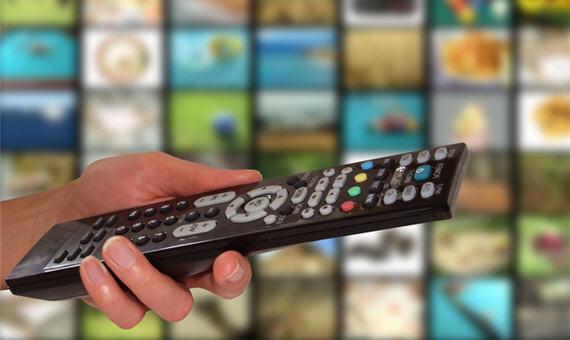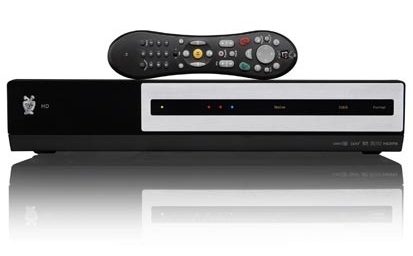Loud Commercials Outlawed
They might not be able to fix the economy or the healthcare system or agree on an efficient tax policy but Congress has managed to reach accord on one of the most serious problems facing America: loud television commercials.
They might not be able to fix the economy or the healthcare system or agree on an efficient tax policy but the Senate has managed to reach accord on one of the most serious problems facing America: loud television commercials.
Legislation to turn down the volume on those loud TV commercials that send couch potatoes diving for their remote controls looks like it’ll soon become law.
The Senate unanimously passed a bill late Wednesday to require television stations and cable companies to keep commercials at the same volume as the programs they interrupt.
The House has passed similar legislation. Before it can become law, minor differences between the two versions have to be worked out when Congress returns to Washington after the Nov. 2 election.
Snark aside, while my initial instinct on these things is that they’re not only too trivial for Congressional action but represent an extension of the Nanny State, this strikes me as perfectly legitimate. The federal government has regulated broadcast since before the advent of commercial television. And, since commercials are paying for most television programming, customer complaints aren’t going to fix this.
But actually carrying out the policy isn’t as easy as it sounds.
Ever since television caught on in the 1950s, the Federal Communication Commission has been getting complaints about blaring commercials. But the FCC concluded in 1984 there was no fair way to write regulations controlling the “apparent loudness” of commercials. So it hasn’t been regulating them.
Correcting sound levels is more complicated than using the remote control. The television shows and ads come from a variety of sources, from local businesses to syndicators.
Managing the transition between programs and ads without spoiling the artistic intent of the producers poses technical challenges and may require TV broadcasters to purchase new equipment. To address the issue, an industry organization recently produced guidelines on how to process, measure and transmit audio in a uniform way.
While they’re at it, I hope they solve the related annoyance of different channels being broadcast at wildly different volumes. It was more problematic in the days of channel flipping than the age of TiVo. But it remains jarring to finish watching one program and then have a program from another channel blaring at you.







Well, why not insist that everyone use Georgia 14pt font on their banner ads on the web? The change is jarring as I glance across my monitor!
Kidding aside, I’m not really kidding. Sure, many commercials are louder than the program that preceded it…usually at the intent of the producer of the programming. A soap opera would not be as loud as, say, an NFL broadcast. There are regulations in place for total loudness, but we can’t legislate away mere contrast.
Loudness levels of all types have been creeping up for years, ask the engineers who prepare individual itune purchases. Woe betide the single that sounds 10% softer than the tune the listener just heard…it’s regarded as dreck, merely because it’s soft.
As always, the market is setting the demand. The person producing the commercial (and setting the sound) has no idea that it will disturb your listening at 2AM on a quiet night in May, six months down the road.
The remote control is one of the truly great inventions of the 20th century and is very effective against blaring TV commercials. I mute every commercial.
I don’t think it would be terribly difficult–or expensive–to implement. Volume output can definitely be controlled at the broadcast point. Sampling and averaging the last 15 seconds of the program, then setting commercial volume to no more than 5% over that average would work.
A 15-second sample would avoid segments literally ending with a bang. A 5% bump would not be intrusive.
“Sampling and averaging the last 15 seconds of the program, then setting commercial volume to no more than 5% over that average would work.”
I imagine that means that setting them at 5% lower would also work. 🙂
The remote control is one of the truly great inventions of the 20th century and is very effective against blaring TV commercials. I mute every commercial.
Two points:
1) You wouldn’t be in such a rush to mute if the sound level was reasonable. In that respect, I’m guessing this law will have the unintended effect that people will actually listen to the commercial, which is what the advertisers want.
2) I don’t know about other people, but I’m usually watching TV and doing something else. Stopping to find the remote isn’t as convenient as you make it out to be. (In fact, since I’m usually chasing small kids around, it’s sometimes less convenient than just walking over to the TV.)
Yes, I agree that a simple volume-level sample could equilize volume levels. However, you also must consider the density of sound. That is, you can have quite a racket of music, SFX, and voiceover at the exact same volume of a bit of sitcom dialog, but the commercial will still seem to be louder.
Why are commercials dense / loud? Because they are effective. They also pay for the show. You might as well tell the billboard makers to turn off their lights at night.
While the volume difference is annoying, it doesn’t hold a candle to those constant video overlays during the actual program, and these are mostly only promos.
@Tano: Yes, I should have said ± 5%. I figure, though, that advertisers are never going to go for the ‘less is more’ adage. Except graphic artists, of course, who use that to excuse their not wanting to get off their *sses very much.
Regarding the overlays: I don’t see why the broadcasters don’t just allocate some of the screen for ad or info placement–sort of like the crawls on news programs, but outside the actual visuals of whatever’s being broadcast. Take a minuscule fraction from the picture and run whatever they like: ads, stats, breaking weather alerts. Just out of the actual picture.
Heaven forbid..
We actually deserve the elected officials… err… nannies… we have elected. Unfortunately.